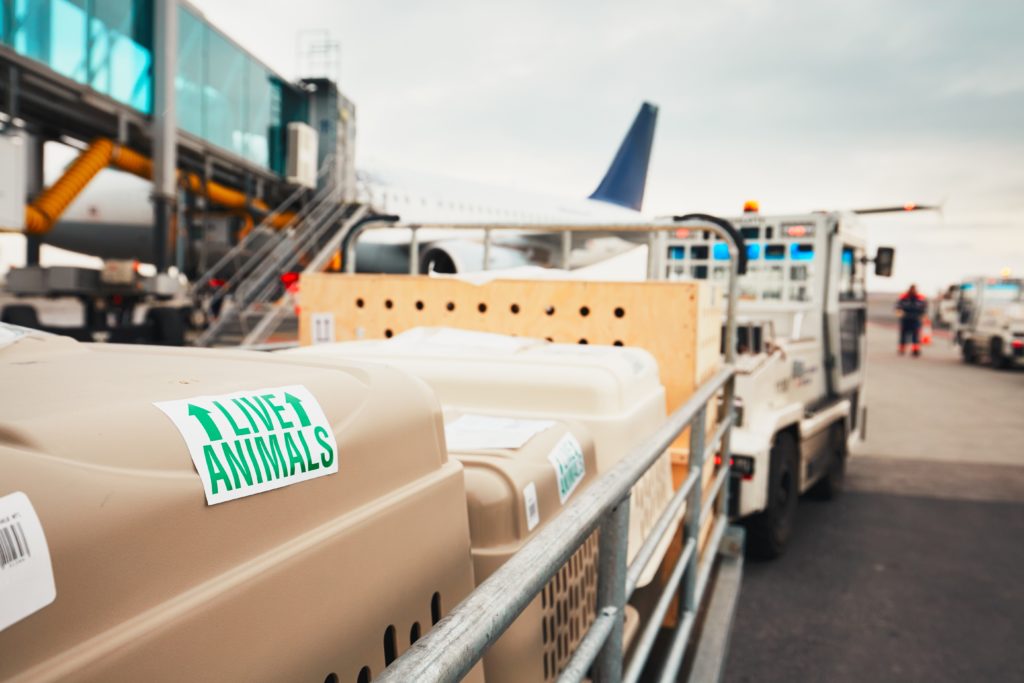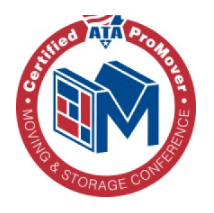How to Move Pets Internationally

Moving Overseas with Cats and Dogs
Planning an international move requires a ton of research and planning. And, moving a pet overseas is not as simple as moving people abroad. However, with some dedicated planning, it can easily be done.

To prepare your pet for travel, establish your timeline, visit your vet, and communicate with your airline. Doing so will reduce your stress, and will make things easier on your pet.
(Note: the information in this article pertains to traveling with a cat or dog. If you’re moving a bird or an exotic animal, there will be additional steps to follow. Contact the US Fish and Wildlife Department for more information.)
Plan Ahead
Moving animals to another country is not something that can be thrown together at the last minute. It’s simply not the same as moving locally or moving interstate with pets. Here, it’s essential to plan ahead to ensure that your pet can leave this country and clear customs in your destination country.
You might think that delays occur because of mandatory quarantine periods upon arrival. In reality, quarantine laws vary by country. If your pet is up to date on vaccines, that quarantine period should be fairly short.
No matter what, know the rules and regulations for pet entry before you leave. Otherwise, you could be in for some surprises.
Know Pet Import Laws: Restrictions
Begin by researching your new country’s pet import laws. To find the rules that will apply to your pet, contact your new home country’s embassy.
Some countries will not allow certain types of animals to enter, period. Others may refuse particular breeds of dogs, like American Pit Bull Terriers and Rottweilers, unless they are documented service animals. Research this information so that there are no surprises.
Also be aware of additional potential restrictions for animal import. For example, your pet may need to be a certain number of weeks old to travel. In addition, pregnant animals may not be able to travel until they deliver their babies.
Required Vaccinations
Know too what vaccines are required for entry. One challenge in moving pets from the United States abroad is the new country’s rabies status.
The United States is classified as a “rabies-controlled” country. Many other countries, though, including European countries, are classified as “rabies-free” countries.
Bringing an animal into a rabies-free country from the U.S. may present some challenges. You will need to show proof of rabies vaccination and/or a rabies booster. In addition, even with vaccination, your pet may have to undergo a quarantine period.
Visit Your Vet
The next thing to do is schedule an appointment with your veterinarian. No matter where you’re moving, you’ll have to provide documented proof of your animal’s health.
First, understand that most countries require that you present a special health certificate. This certificate, from the Animal and Plant Health Inspection Service (APHIS), must be signed by a USDA-accredited veterinarian. If your vet is not USDA certified, the record will be invalid.
In addition, depending on where you’re going, you many need to have your pet microchipped with an ISO microchip to clear customs. Make sure that your pet has the right microchip, and that it’s properly registered.
Finally, request an extended supply of any medication your pet may need. That way, your pet will be covered until you get settled into your new home.
Transportation Options for Pets
If you’re traveling internationally with pets, you’re probably need to travel by airplane. Trains, buses, and most ocean vessels in the United States will only transport verified service animals. Some cruise lines allow pets aboard, but it varies by line. So, if you’re moving from the United States with pets, your best bet is to fly.
Contact Your Airline
Before you book your tickets, call your airline to learn their rules for transporting pets internationally. Most airlines have similar rules for moving cats and small to medium-sized dogs. However, be aware that airlines may have age and weight restrictions as well as certain breed restrictions for these animals.
Also ask about regulations on carrier type and size. Finally, know that dogs over 100 pounds may require special handling.
How Pets Fly
If your pet will be traveling on an airplane, they can fly one of three ways depending on their size and on your airline’s regulations:
- With you: Cats and small dogs may fly on your plane, either in-cabin with you or as shipped cargo with the luggage.
If in-cabin, pets must spend the flight in a soft-sided carrier. The carrier should have ample ventilation and be able to fit underneath a seat. This is the safest way to travel by airplane.
Flying as cargo means that your pet will be placed in a well-ventilated, hard-sided crate and kept in the cargo hold with passenger luggage for the duration of the flight.
- As cargo on a separate flight: If you book your pet on a separate flight, you’ll be charged a cargo rate for transportation. This rate will be higher than the rate for excess baggage. However, airlines increasingly do not allow animals to be shipped without their owners.
3. Shipped through a licensed commercial shipper: For this option, you will be charged the cargo rate plus the shipper’s fee. Increasingly, airlines are requiring that pets fly via a licensed commercial shipper if they can’t fly in-cabin with their owners.
Finding a Licensed Commercial Shipper
Licensed commercial shippers are professional organizations certified to transport animals internationally. Shippers can help you with all areas related to moving pets overseas.
They’re knowledgeable about flight regulations and customs processes. They can also help with additional services you may need, like boarding and grooming.
For more information on locating reputable pet shippers, contact the International Pet and Animal Transportation Association (IPATA).
Planning an International Relocation?
If you’re moving abroad for work or for pleasure, you’ve got a lot of planning to do. And, odds are you’re going to want to bring the family pet along.
Such a big move requires the expert-level help that can only come from a moving company. In particular, a moving company that specializes in international relocation. Do your research and be organized. With some help, moving your pets overseas can be just another part of your international moving plan.
Related Articles
Types of Moving Companies: Which Service Is Right for Your Move?

The industry of modern moving services has evolved far beyond simple truck rentals and basic transportation. Today’s $86 billion moving industry encompasses specialized services ranging from local apartment moves to complex international relocations. This transformation reflects the diverse needs of millions of Americans who relocate each year. Exploring various moving service options directly impacts both […]
Read More5 Best Moving Truck Companies: Compare & Choose Your Perfect Fit

Moving across town or the country demands more than just any truck rental service – it requires a reliable partner who grasps the subtle details of relocation. The industry of moving truck companies has evolved significantly, with industry leaders offering distinct advantages for different moving scenarios. Nelson Westerberg stands at the forefront of this evolution, […]
Read More




